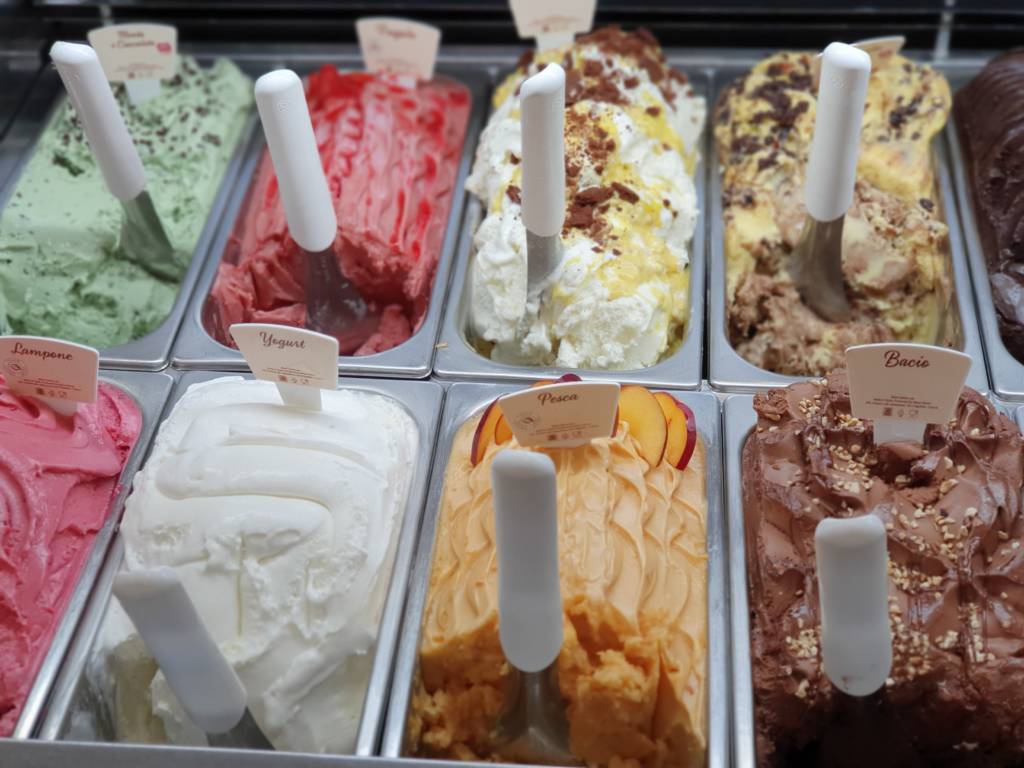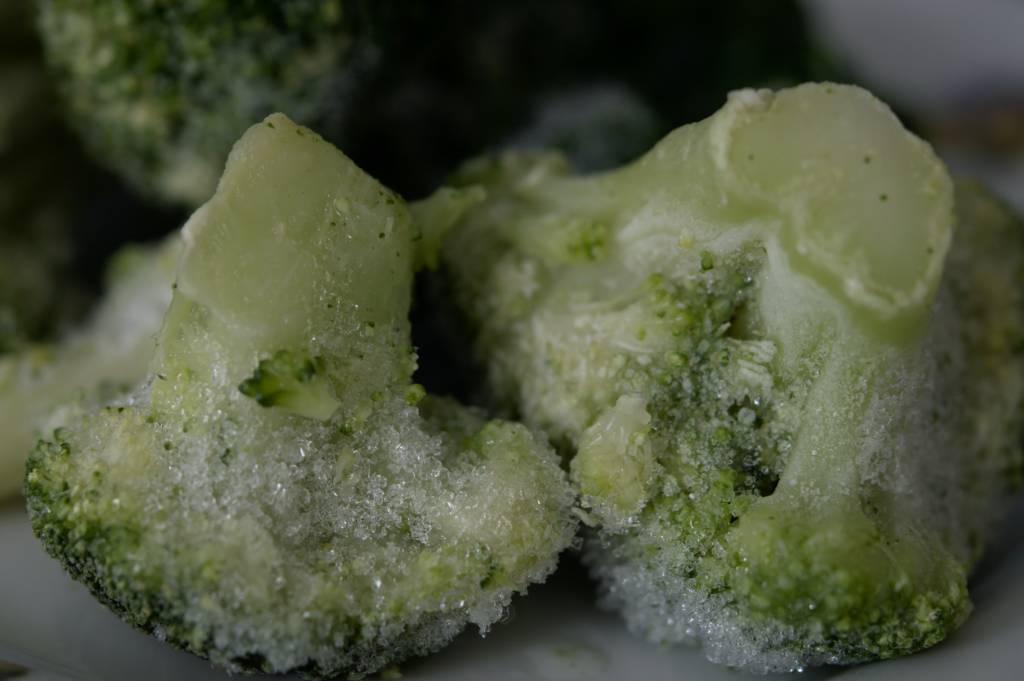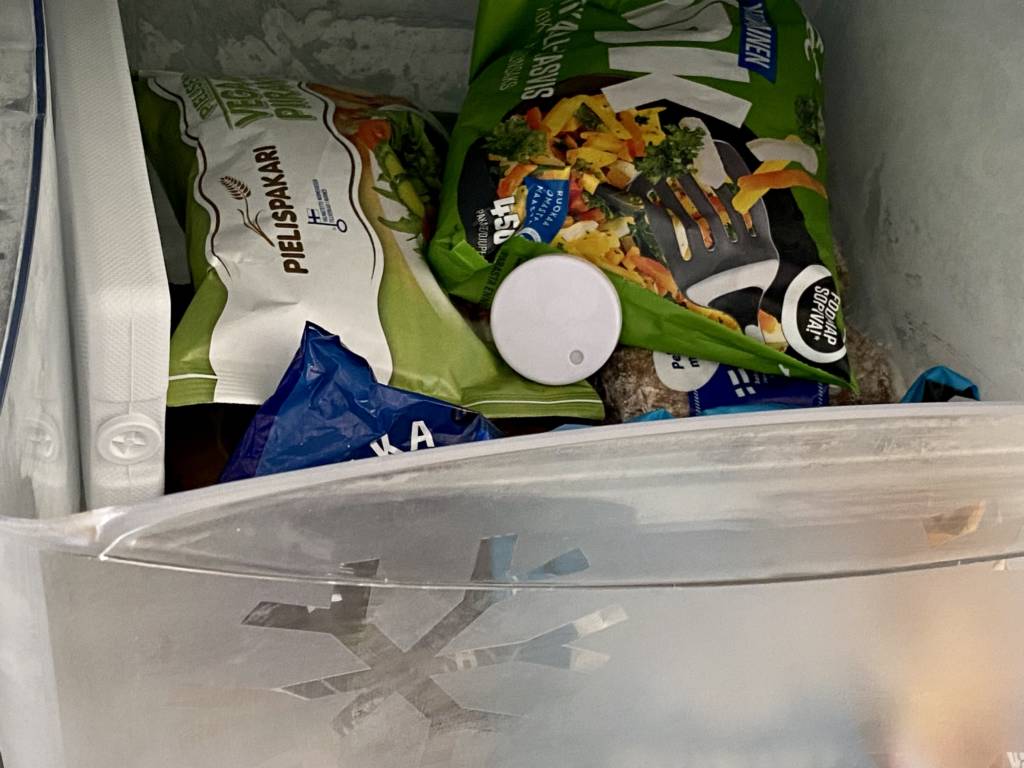According to the Food and Drug Administration FDA the best freezer temperature is 0 ° Fahrenheit or -18 ° Celsius which is sufficient to keep the food safe for an extended period of time. But can the freezer be too cold? Or, is 0 °F or -18 °C too low? Is it always the best temperature? And how do I know what the temperature actually is inside my freezer?
The ability of a freezer to keep from spoiling is usually taken for granted. They are very cold and they contain food that remains edible for a long time. In this article, I will go through the questions I pointed out in the beginning of this text. I would like to share a little more information about this cold device in our kitchens. If you want to learn more about fridges, make sure the check out our article here!
Why is 0 °F or -18 °C the ideal freezer temperature?
The temperature of 0 °F or -18 °C is regarded as offering the ideal balance between energy consumption while keeping microbes from growing in the food. Afterall, the organic microorganisms in the food are the reasons for food spoilage and food poisoning.
But as -18 °C happens to be almost exactly the same as 0 °F, the temperature unit used mainly in the United States, could this temperature be just a convenient number to memorise? No, actually the optimal temperature has been studied to be the optimal one. The colder the environment, the less the food spoils. But on the other hand, some suggest that a one degree Celsius drop in temperature requires 5% more energy.
What temperature should you set in your freezer?
In essence, 0 °F / -18 °C is the average temperature you should try to keep your freezer at all times. This is the optimal freezer temperature for meat, ice cream or veggies.

Is the temperature of 0 °F or -18 °C in the freezer always optimal?
No, because when you are freezing larger amounts of food, the freezer should be set to a lower temperature to fasten the process of the food being frozen. Therefore, freezer’s temperature should initially be set to a colder temperature, perhaps -22 °C 一 -24 °C / 0 °F 一 -11 °F. Food must be frozen quickly to ensure the proper temperature is also reached quickly. This will make the food last longer.
Freezer too cold? Problems occuring from temperatures that are too cold.
The biggest problem concerning excessively low temperatures in a fridge is the energy consumption. As mentioned earlier, the drop of just one degree Celsius will increase the energy consumption by 5%. The freezer is on all the time, so by raising (or not lowering as much) the temperature, you can save significantly on your energy costs.
Temperatures below 0 °F or -18 °C can cause “freeze burns” to food. Also, colder temperatures can damage the taste and the texture of frozen foods. In other words, even though frozen foods would be safe to eat, their taste could be altered or diminished. This is important to know when freezing bigger amounts of food.
Here in Finland people tend to collect berries and mushrooms from forests and freeze them in large quantities. Then they are eaten during the winter. Here, a temperature that is too cold can make the berries lose their sweet or bitter taste. Hence, the wrong temperature in a freezer can ruin the hard work done during the summer.
What is a freeze burn?
Freeze burn happens when cold and dry air is in contact with food. This dry air will dry out the outer layer of food making it lose its taste and colour. Freeze burn will happen, if food is not packed properly in air tight containers.
Freeze burn does not make the food inedible. It simply changes the look of food as well as the taste of the “burnt” area.

What if the temperature in a freezer is warmer than -18 °C?
At -18 °C / 0 °F Microorganisms are entering a phase in which they do not multiply. They are alive but they are not growing and ruining your food. When the temperature is above -18 °C / 0 °F, these organisms start to reproduce. And even though the process is much slower than in warmer temperatures, food in a freezer can still spoil over time.
It is hard to understand the subtle differences between let’s say -14 °C / 7 °F and -18 °C / 0 °F, but they really do matter when storing food.
Problems arising from excessively cold temperatures are much less dangerous than problems resulting from temperatures that are too warm. Extreme cold will never make food inedible as warmer temperatures can. Hence, you should always aim to have -18 °C / 0 °F or less in your freezer.
Freezer Temperature Monitoring Systems
A thermometer that can handle temperatures of -18 °C / 0 °F is the best solution to measure a freezer’s conditions. The thermometer should be placed in the middle of the freezer as it gives the average temperature of the compartment. It is normally a little colder in the back of the freezer than in the front of the freezer. Optimally, you should place the thermometer next to some already frozen food.
As a one time reading of your freezer’s temperature is beneficial, the best alternative is to measure the freezer’s temperature continuously. Continuous measuring lets you examine the cycles of temperature your fridge goes through, as well as how much the temperature alters when you put warm food in the freezer.

Wireless freezer temperature monitoring with Bluetooth sensors
The best solution for monitoring freezer temperature is a wireless temperature sensor. Their measurements are more accurate than traditional thermometers. They are also easier to access and save data to form easy-to-read graphs.
One such sensor is the RuuviTag. It is designed in Finland and manufactured in the EU. RuuviTag can operate in the freezing temperatures of a freezer which makes it a top candidate for this freezer temperature monitor job. The sensor works with an app, the RuuviStation, where you can view the measurements in real-time, examine the graphs of past measurements and set alerts for different temperatures.
Remote freezer monitoring system
For example, you can set your RuuviTag to alert you if the freezer’s temperature increases too much. This could stem from a broken thermostat or from the freezer being too full. With this alert, you can possibly save a full freezer of food from spoilage.
RuuviTag also works with Ruuvi Gateway. Ruuvi Gateway receives RuuviTag’s measurement data and uploads it to the Internet. With Ruuvi Gateway, you do not need a Bleutooth connection to receive data from your RuuviTag. RuuviTag by itself, however, works with Bluetooth.
In addition to temperature, RuuviTag measures air humidity, air pressure and movement. Ruuvi is truly the best freezer temperature monitor.

Commercial freezer temperature monitoring via WiFi
For business owners, monitoring freezer’s temperature is essential for making sure that customers are not eating spoiled food. With Ruuvi’s products, you could receive up-to-date data on the temperatures of your restaurants’ or stores’ fridges. And with history graphs you could show everyone that you are keeping freezers at ideal temperatures.
You would receive alarms via WiFi if some freezer would start to break down. You could potentially save a lot of food from going to waste with this WiFi freezer thermometer.
Humidity controls in cold storages
Humidity control in cold storage is essential to maintain the quality and shelf life of stored products. Foods are hygroscopic materials and in addition to temperature also humidity impacts to them. Proper humidity control can be achieved through the use of dehumidifiers, humidifiers, and air exchange systems. It’s important to maintain a specific humidity range depending on the products stored. Additionally, regular monitoring and adjusting the humidity levels are necessary to ensure optimal storage conditions.
Conclusions
The ideal temperature in a freezer is 0 °F or -18 °C. It is the optimal temperature in which food stays almost indefinitely edible and it uses as little energy as possible to do so. In this temperature, frozen food does not lose its flavour nor other aspects as fast as it could in colder temperatures.
Smart sensors are a great way to ensure your freezer maintains correct conditions. They display accurate data, are convenient to use, and as an added advantage are also relatively inexpensive.
Is your freezer cold enough?
Whether you’re freezing dozens of litres of berries or just some junk food, you should know your freezer’s temperature. You should ensure that your freezer is operating at at least -18 °C / 0 °F to prevent any food-based illnesses.
FAQ
What temperature should a freezer be at?
The optimal temperature in a freezer is -18 °C / 0 °F.
What is a freeze burn?
Freeze burn happens when cold and dry air comes in contact with food, typically meat products. It dries out outer layers of the food causing it to lose its taste and texture. It does not make food inedible, though.
Why should I monitor my freezer’s conditions?
If the temperature in a freezer is too warm, food will eventually spoil. If you do not monitor the temperature of your freezer, you may predispose yourself to food-based illnesses. The freezer is best monitored with smart Bluetooth sensors, such as the RuuviTag.
Which is colder -15°c or -23°c in freezer?
-23 °C is colder in a freezer than -15 °C. That is because with negative numbers, “higher” the number, lower the value.
How warm can a freezer be set at?
You should try to have your freezer at a minimum of -18 °C / 0 °F. Food will spoil quickly in temperatures above that.
How to check freezer temperature without a thermometer?
Unfortunately it’s not possible accurately, but there are a few simple ways to check the temperature of a freezer without using a thermometer.
One method is to place a cup of water in the freezer, and then check it after a set amount of time, such as 15 minutes. If the water is partially frozen, the freezer is at or below freezing temperature (0°C or 32°F).
Another method is to use a food item that is sensitive to temperature, such as ice cream. If the ice cream is rock hard, the freezer is at a proper temperature. If it’s soft, then the freezer may not be cold enough.
These methods may not give an exact temperature reading, but can give you a general sense of whether the freezer is working properly or not.